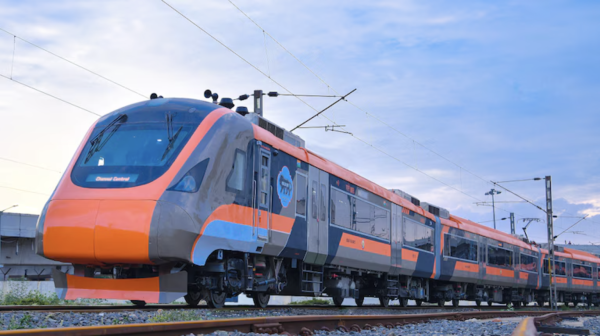
In a significant move to enhance intercity connectivity, Railway Minister Ashwini Vaishnav has announced plans to introduce the Namo Bharat Rapid Rail system to connect Bengaluru, Mysore, and Tumkur. This development promises to transform regional transportation and boost economic ties between these key urban centers in Karnataka.
The Namo Bharat Rapid Rail, previously known as Vande Bharat Metro, is designed for short-distance intercity traveltypically covering distances of 100-250 km. Minister Vaishnav emphasized the suitability of this system for the Bengaluru-Mysore route (135 km) and the Bengaluru-Tumkur route (70 km), highlighting its potential for frequent and efficient service.
Drawing parallels with the successful implementation between Ahmedabad and Bhuj, the minister outlined a phased approach for the Bengaluru region. The plan involves operating the first few trains for about a year, followed by large-scale production to expand services to other cities.
While K-RIDE, the implementing agency for Bengaluru’s suburban railway project, had proposed extending services to neighboring cities like Kolar, Hosur, and Chikkaballapur, the Railway Board rejected this in favor of focusing on doubling lanes, increasing train speeds, and introducing Vande Bharat Metro trains to enhance suburban travel.
Vaishnav also provided an update on the proposed circular railway network for Bengaluru. The Detailed Project Report (DPR) for this Rs 23,000 crore project is expected to be finalized by December 2024. Covering 287 km, this network will connect various suburbs around Bengaluru, significantly boosting the city’s rail capacity and helping to decongest existing bottlenecks.
In a move to improve airport access, the minister announced plans to relocate the Kempegowda International Airport halt station closer to the airport departures area. This change aims to provide more convenient access for passengers, with initial talks set to begin with airport authorities to expedite the process.
The introduction of Namo Bharat Rapid Rail and the development of a circular railway network mark significant steps in Bengaluru’s transportation evolution. These initiatives not only promise to enhance intercity and intracity connectivity but also align with broader goals of sustainable urban development and economic growth in the region.
As these projects progress, they are likely to have a transformative impact on travel patterns, urban expansion, and the overall quality of life for residents in and around Bengaluru. The coming years will be crucial in realizing these ambitious plans and shaping the future of rail transport in one of India’s most dynamic urban regions.